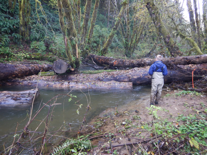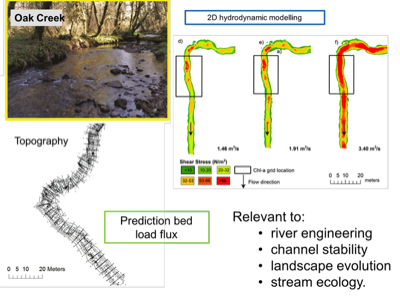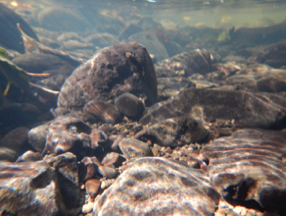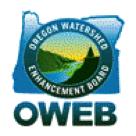Sediment transport modeling and its relation to primary production in streams
Evaluation fo the effectiveness of large wood as a restoration strategy to improve fish habitat
The Role of Lithology on longitudinal trends in Channel Morphology

FLUVIAL GEOMORPHOLOGY
Fluvial processes describe the movement of water and sediment through river networks. These processes are influenced by geology, topography, land cover, and climate settings. Even though the movement of water and sediment from continents to the ocean has intrigued geomorphologies for over a century we are still trying to understand how river networks convey water and sediment from their watersheds, yet maintaining relatively stable geometries. Understanding fluvial processes would allow predicting the amount of sediment produced and transported by a river, the frequency of the sediment transport events, and the impacts that changes in land cover type and climate could cause in river systems. Besides its importance for water resources management, sediment transport is relevant to river ecology because it can disrupt or modify the channel bed and therefore the habitat of benthic organisms located at the bottom of rivers food webs. Below you will find informtion about past and ongoing projects:

In some settings, steep slopes result in strongly linked hillslope and in-stream processes. In such settings, coarse sediment and large wood directly enter streams, which may collectively influence channel geometry and the routing of sediment downstream by fluvial processes. Therefore, to predict channel geometry and sediment transport at the landscape scale, we require an improved understanding of hillslope–channel coupling. To this end, we investigate longitudinal patterns of channel geometry in two adjacent watersheds of the Oregon Coast Range with different underlying lithology (volcanic and sedimentary) that may have different hillslope and in-channel processes.
People:
Mulu Fraktin (Former Ms. Student)
Dr. Sharon Bywater-Reyes (Collaborator)
People:
Russell Bair (Former Ms. Student)
Amelia Yeager (Former Ms. Student)
Christioher Lorion (Collaborator)
People:
Scott Katz (Alumni)
Samantha Cargill (PhD. Student)
Dr. Dana Warren (Collaborator)

Bed load transport modeliing. New equation using 2D shear stress distributions


Bed load transport formulations for gravel bed-rivers are often based on reach-averaged shear stress values. However, the complexity of the flow field in these systems results in wide distributions of shear stress, whose effects on bed load transport are not well captured by the frequently used bed load transport equations, leading to inaccurate estimates of sediment transport. Here, we modified a subsurface-based bed load transport equation to include the complete distributions of shear stress generated by a given flow within a reach. The equation was calibrated and verified using bed load data measured at Oak Creek, OR.
People:
Angel Monsalve (Collaborator)
Funded by

Award # 1619700
Funded by

Award # 1619700
Funded by

Award # 1619700
Large wood additions are often part of fish habitat restoration projects. However, there is limited information about the spatial-temporal variability in hydraulic changes after large wood additions. We investigated reach scale hydraulic changes triggered after the addition of LW that are relevant to juvenile Coho Salmon survival.



Funded by
